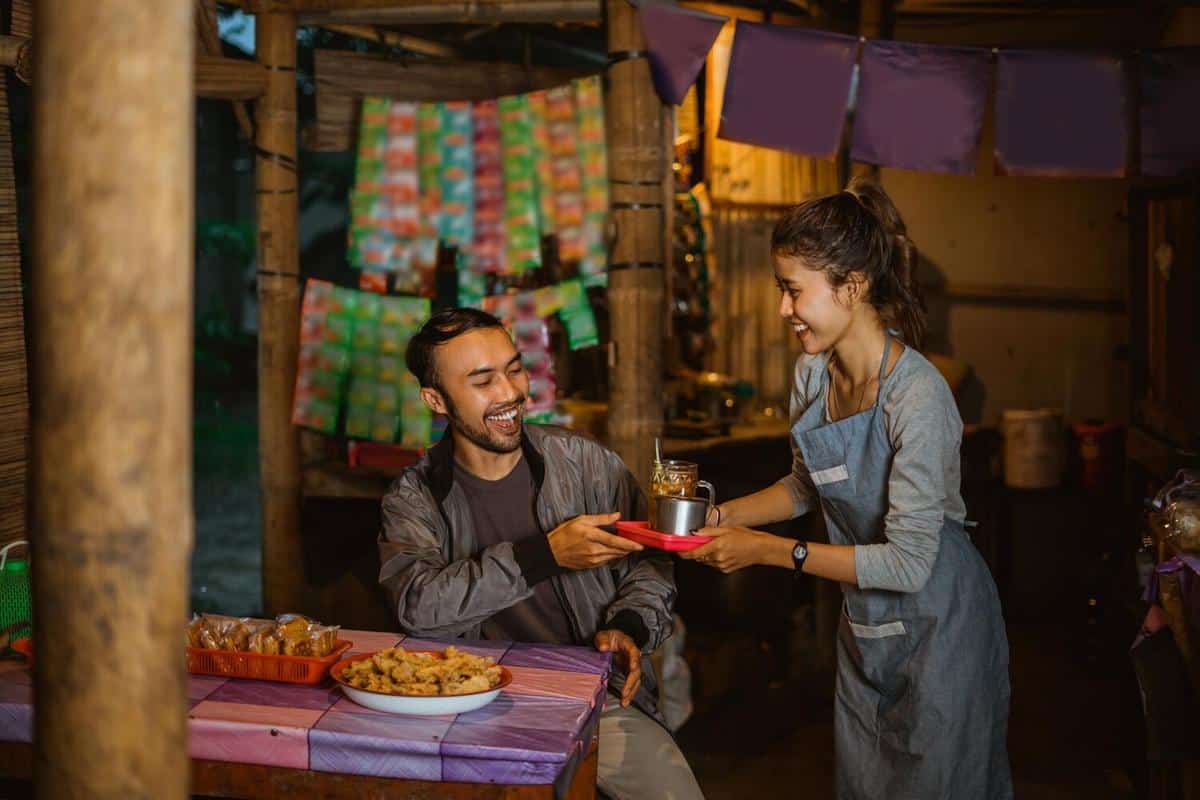
A Journey Through Southeast Asian Street Food
The vibrant tapestry of Southeast Asian street food is as diverse as it is delicious, offering a culinary adventure that tantalizes the senses. From bustling night markets to humble roadside stalls, the region’s street food scene is a celebration of flavors, aromas, and textures that reflect a rich cultural heritage.
Exploring the street food culture in Southeast Asia is akin to stepping into a world where every dish tells a story, every vendor is a storyteller, and every bite invites a deeper appreciation for culinary traditions. According to renowned food critic, James Oseland, Southeast Asian street food is ‘an immersive experience that connects you to the heart of the culture’.
A Diverse Culinary Landscape
The street food scene in Southeast Asia is incredibly varied, with each country offering its own unique street-side delicacies. In Thailand, for example, you can savor the spicy and sour notes of Som Tum (papaya salad), while in Vietnam, the fragrant Phở beckons with its aromatic broth. Malaysia’s street food is a melting pot of flavors, with dishes like Nasi Lemak providing a taste of its multicultural influences.
The Allure of Night Markets
Night markets are an integral part of Southeast Asian street food culture. These bustling hubs not only offer a plethora of culinary delights but also serve as social gathering spots. Whether you’re wandering through the vibrant streets of Bangkok’s Chatuchak Market or exploring the culinary offerings of Kuala Lumpur’s Jalan Alor, the atmosphere is electric, filled with the enticing aroma of grilled meats and freshly cooked noodles.
Statistics on Street Food Popularity
According to a report by the Food and Agriculture Organization, street food represents up to 40% of the daily diet of urban consumers in many Southeast Asian cities. This statistic underscores the integral role street food plays in the daily lives and diets of millions.
Personal Anecdotes and Experiences
Consider the experience of David Tran, a travel blogger who recalls his first taste of Banana Roti in Thailand: ‘The vendor swiftly rolled the dough, filled it with ripe bananas, and fried it to golden perfection. The combination of crispy exterior and sweet, gooey center was unforgettable’. Such personal encounters highlight the sensory journey street food offers.
Actionable Tips for Street Food Enthusiasts
- Start with popular dishes to ease into the local cuisine.
- Observe where locals flock to ensure quality and authenticity.
- Ask vendors about ingredients if you have dietary restrictions.
- Bring local currency in small denominations for easier transactions.
Street Food Comparison Table
| Country | Popular Dish | Key Ingredients |
|---|---|---|
| Thailand | Pad Thai | Rice noodles, tofu, shrimp, peanuts |
| Vietnam | Banh Mi | Baguette, pork, pickled vegetables |
| Malaysia | Satay | Grilled meat, peanut sauce |
| Indonesia | Nasi Goreng | Fried rice, egg, vegetables |
| Philippines | Adobo | Chicken, soy sauce, vinegar |
| Singapore | Hainanese Chicken Rice | Poached chicken, rice, chili sauce |
| Cambodia | Amok | Fish, coconut milk, curry paste |
| Laos | Larb | Minced meat, herbs, lime |
Frequently Asked Questions
Is street food safe to eat?
Street food is generally safe to eat if you choose vendors with a high turnover of customers and freshly prepared food.
What should I try first?
Start with well-known dishes like Pad Thai or Phở to ease into the local flavors.
How can I avoid foodborne illnesses?
Stick to food that is cooked thoroughly and avoid items that have been sitting out for long periods.
Conclusion
Southeast Asian street food offers an unparalleled glimpse into the culinary soul of the region. By exploring its vibrant markets and sampling its diverse offerings, you not only embark on a gastronomic journey but also connect with the culture and people of Southeast Asia. So, pack your bags, bring your appetite, and prepare to be enchanted by the myriad flavors awaiting you.


